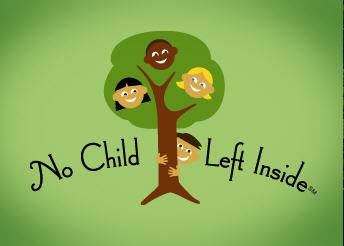 Aug. 7, 2013 “Wait, didn’t we already DO this?”
Aug. 7, 2013 “Wait, didn’t we already DO this?”
That’s the refrain I hear constantly among parents, whether it’s supporting environmental education legislation, or getting junk food out of vending machines and school lunch programs.
When research shows the benefits and links between nature, learning, health and wellness are clear, it makes me wonder, what will we need to prove that school is a great starting point to get kids outside…prescribe it as an Rx? As Sierra Club policy manager Jackie Ostfeld writes:
“…Science test scores have jumped as much as a 27% simply by integrating outdoor education with kids in school…Getting outdoors encourages physical fitness, reduces stress and lessens the symptoms of attention-deficit disorders which, in turn, improve the ability of our students to learn.”
With recess/PE cutbacks, digital and media proliferation and narrowed curriculum mandates, environmental education and media literacy are two of the biggest chasms that need brought to the forefront at ever earlier K-12 stages integrating STEM studies, rather than separating into a silo of ‘STEM objectives.’ (I agree with the NCLI reply to the President)
What I’m admittedly less clear on is the theory vs practice portions of implementation, since we all know bureacratic tethers can water down impact to muddy silt. That’s an ongoing push/pull that I hope hands-on educators can wrench away from the Department of Education and vested interest groups of fiscal hoop-jumpers, but I unequivocally support NCLI 2013 in overall media message as a necessity for students to not just survive but thrive in creating the future of a green economy.
In some ways, it feels like being trapped in that Bill Murray scene in Groundhog Day where he keeps reliving the same scene in his life helpless and perplexed by the absurdity of starting all over again…when bi-partisan support shows a win for the planet, the people and even the political animals in Washington. (nice capsulated brief of NCLI ‘s 2013 key issues via ACA Camps)
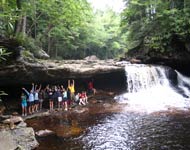 Use Nature’s “White Board” for STEM study in the Great Outdoors
Use Nature’s “White Board” for STEM study in the Great Outdoors
For background…in the summer of 2008 when Shaping Youth joined the NCLI “No Child Left Inside” eco-literacy coalition to integrate STEM and environmental education into the school day to use the ‘white board of the great outdoors’ as a hands-on living lab, I strongly felt that like media literacy, it was WAY past time to thread eco-literacy through the curricula beyond a cursory check list.
We let out a happy howl of Congressional victory by fall 2008, yet time and again, NCLI died in the Senate (2011) with revival surfacing in zombie-like persistence to support what seems like a ‘no brainer’ to reward positive practices that engage kids inside the classroom with outdoor learning fun.
NCLI Act 2013′s purpose?
To reward schools that incorporate eco-literacy into their existing curricula in fresh new ways with funding resources, and expand grants to ensure teachers have knowledge and skills to teach it. (full text of the bills) Sounds straightforward…But is it?
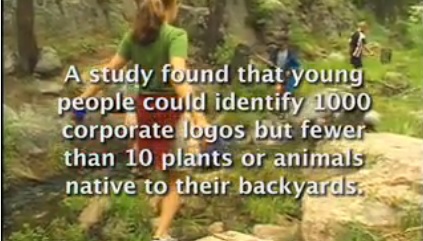 On one hand…Kids are able to engage as stewards of the planet while educators make learning fun, in exploratory, hands-on, “Get ‘Em Outside” ways that make ME even want to go back to school…
On one hand…Kids are able to engage as stewards of the planet while educators make learning fun, in exploratory, hands-on, “Get ‘Em Outside” ways that make ME even want to go back to school…
Leverage what kids enjoy and they learn more.
Make it relevant for their world, and they see more.
It’s not rocket science to see how STEM benefits align with eco-literacy…And yet:
NCLI shares: “…The proposed budget for Fiscal Year 2014 eliminates virtually all funding for environmental education across federal agencies, including NOAA and EPA. As part of the Administration’s plan to consolidate STEM Education programs, funding for programs such as EPA’s Environmental Education Capacity Building grants and NOAA’s B-WET awards would be transferred to other federal agencies.”
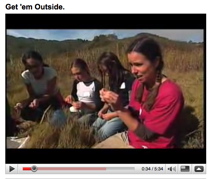 Whaaaa? How can a bunch of bureaucrats who haven’t been in a classroom OR the great outdoors in eons even begin to imagine the multiple ways teachers are integrating applied sciences with STEM across curriculum?
Whaaaa? How can a bunch of bureaucrats who haven’t been in a classroom OR the great outdoors in eons even begin to imagine the multiple ways teachers are integrating applied sciences with STEM across curriculum?
Again, I’m not well-versed in the ‘business’ side of our education system, but it seems foolhardy to slide into ‘oh, by the way, we’ve axed that’ without input from stakeholders and educators to “show and tell” how well it’s working, especially hearing the need from students themselves?
I’m not just talking about environmental education in the applied sciences realm of STEM either…I’m talking poetry, literature, critical thinking, storytelling, connected learning and beyond.
Look no further than our own 11-year old reviewer Rylan using MIT’s pilot outdoor education game “Vanished” to blend nature and STEM into an indoor/outdoor scavenger hunt learning about media literacy, critical thinking, nature and interactive gaming in the process.
The way I see it, the snail-patters and spider-stompers that co-exist on K-5 cement playgrounds represent a surreal microcosm of life.
If we extend those polarities onto neutral ground in the outdoors, to expose the natural synergies and create the opportunity to ask ‘why’…then there are shifts in understanding that begin to tumble forth, gushing like a waterfall.
“Why do we need spiders and snails in the first place?”
“What do they really DO?”
“Why should I care about bugs or insects at all?”
Check out “The Bug Chicks” two entomologists and their amazing storytelling media effort to bring their ‘green couch’ to kids across the nation with environmental education filming “America’s awesome bugs”
Also, jump aboard the SOS “Serve Outside September” movement to start seeding ‘back to school’ segues of service learning as applied science in the living lab of the outdoors. Point is:
We should USE media, and USE STEM, and USE these living lab/field study findings as ‘teaching moments’ to adapt rhetoric into reality and keep it real and relevant…Whether it’s exploring outside with insects and taking air samples on an urban K-12 campus, or literally watching grass grow at a country school!
With the green economy and solutions-building, and the vital role of STEM in the future of our planet, doesn’t it make sense to ‘learn by doing’ and ‘do by learning?’
As British anthropologist and science writer Roger Lewin said,
“Too often we give children answers to remember rather than problems to solve.”
Media-wise, we’re seeing escalating kids’ time spent with “The War of the Screens” (and digital pursuits surpassing TV for the first time ever!)…
…It feels like environmental education not only fits well into the school day, it may be the only place kids will get that initial key exposure to pass the baton on stewardship and begin to seed and rebuild our ecosystems with creative solutions from kids asking ‘why’ and ‘why not?’ (especially in low income/urban settings)
STEM and Eco-Literacy IS InterConnected…And so is media and connected learning in and outside the classroom.
Neither are ‘either/or’ propositions…
Just as ‘screen time’ isn’t a catch-all phrase to be applied across all media sans nuanced understanding, environmental education isn’t a one-size fits all mandate either. Both are amazing learning opportunities to engage and inspire lifelong learning among youth.
Pioneering advocates like Richard Louv, author of The Nature Principle: Reconnecting with Life in a Virtual Age (founder of Children and Nature Network and the term ‘nature deficit disorder) and sites like Discover the Forest for tweens are wonderful at leveraging the power of discovery through media to get kids hands-on with connected learning, while advocating for unplugged outdoor lessons that STEM from the earth as well. It’s all enmeshed.
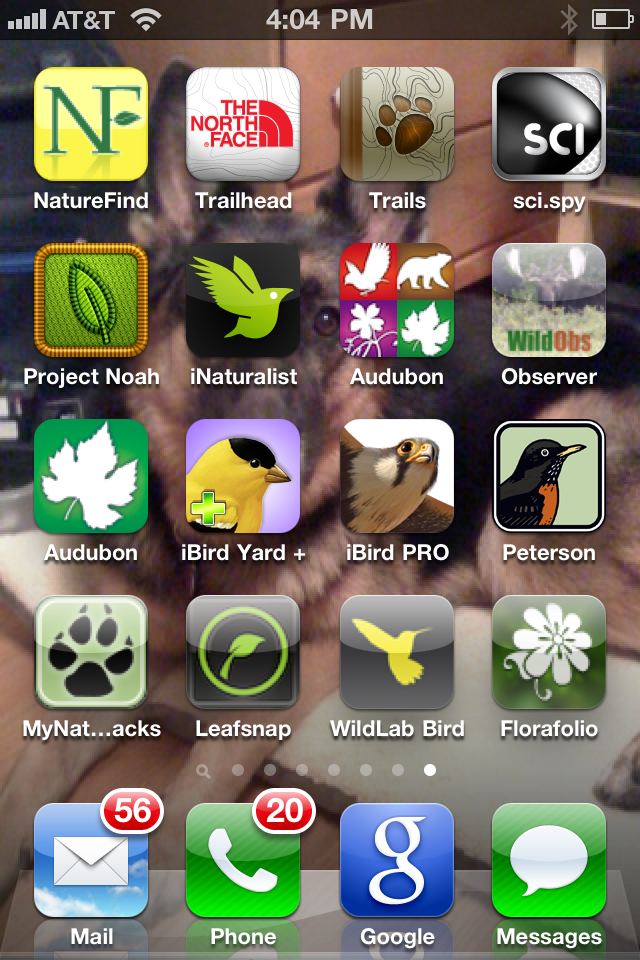 Just look at the slew of citizen science and nature apps that are opening eyes with STEM meets eco-literacy awareness and media netiquette…
Just look at the slew of citizen science and nature apps that are opening eyes with STEM meets eco-literacy awareness and media netiquette…
It’s great to see a fresh flow of vibrant mindshare spanning across multiple subjects, pairing passion and pragmatics to get kids outside and make learning fun.
Pedantic textbook teaching might as well be runoff, like grey water of the brain when compared to the powerful productivity of outdoor eco-literacy.
Like the Groundhog Day scene I mentioned earlier, it feels like every time the government actually starts supporting something smart and doing it right, someone kills the bill and drives a stake through the program.
It happened with the big media viral fitness focus of VERB Yellowball to get kids physically moving in fun, playful ways…when whammo, it was deflated (ok, popped) just as it was taking off with massive traction.
Let’s not let that happen (again) with the 2013 NCLI Act. You in? Sign here. And contact your rep with powerful zipcode clicktivism.
If you’re out, help me understand the whys, as I know it’s nuanced and I’d love to hear directly from students, parents, and hands-on EE educators as to what is and isn’t working.
Either way, in the larger picture:
Let’s plant the seeds to help the feds see how eco-literacy fits into the classroom and how the classroom fits into the great outdoors.
It’s promising to think of the nourishing soil of the mind capable of harvesting STEM, stewardship, solutions, and sustainability for us all. “We can’t protect what we don’t know.”
Visual Credits: Chart from Parenting in the Age of Digital Technology June 2013, Center on Media and Human Development
School of Communication, Northwestern University, Lead NCLI graphic via www.kids.ct.gov, NCLI screenshots from the powerful Get ‘Em Outside video below.
Related Eco-Kids Reading by Amy Jussel, Shaping Youth w/Links to Vital Resources
Great Nature Apps & Media Netiquette in A Totally Wired World
Inspiring Kids As Stewards of the Planet
Inspiring Kids With Green Media
Nature Rocks: Reconnecting Families with Planet Earth!
Shaping Youth Joins Eco-Literacy Coalition: NCLI
When Art Meets Earth: Wyland’s Murals Inspire Kids to Care
350.org: Edu & Eco Activism for Int’l Climate Change
Kids Bring Home the Message to Cool the Earth
Spring Break Sanctuary-Media Unplugged on Catalina
Hope Is On The Horizon When Movements Go Mainstream
Green Teen Videos On Climate Change: Global Challenge
Climate Change Chocolate, TerraPass E-Cause Animation…
Coen Brothers Ad For Clean Coal Air Freshener (kids faves!)
Disney Nature’s EARTH movie: Our Teen Team’s Take
International Day of Peace to Reach and Teach
Green Grades Report Cards: Forest Ethics
One Teen’s View: Use Eco As An Equalizer
Project Green Dorm: Engaging Youth Via Teens Turning Green
S.F. Oil Spill Prompts Altruism & Activism in Kids
Planting Earthseeds Via The Magic School Bus
New Media Worldometers Help Data Click With Kids
Media Savvy Kids and Nature Deficit Disorder
And here are a few positive picks of online & offline media to get kids to ‘take a hike’:
Print Media:
Sharing Nature with Children: An age-gauged book of fun ideas that engage kids in an eco-revealing way without the preach and teach banter. Perfect to toss in the glove box for an impromptu outdoor adventure, whether it’s the ‘web of life’ game or a scavenger hunt in a forest or a park, it details what you need, how many kids and which age it suits. It has a sequel that’s great too.
Nature in a Nutshell for Kids: Over 100 Activities You Can Do in Ten Minutes or Less
Kids Camp! Activities for the Backyard or Wilderness
Online Media:
National Institute of Environmental Health Sciences: This site has a wonderful round-up of a gazillion links and resources from online games and quizzes to conservation, animal/eco-friendly fun, and solid waste/gross out science, almost all geared to “tweens” 9-14.
The Green Dollhouse Project: Kids learn about sustainable building through energy efficiency, nontoxic materials, water conservation, and more. This one site is a portal of useful links to renown entities like the Rocky Mountain Institute where kids can explore the art of eco-design, ‘going green,’ and ‘living off the grid.’
Whole Foods for Kids, Healthy Snack Alternatives: Backpack with some decent chow, learn some basics on berry-picking, (what they look like and what to eat in the wild) & discover leaves, herbs and edibles found in nature for wilderness survival.
A few FREE nature apps via Wilderness.org and NWF.org
What’s nearby? Trailhead by The North Face Oh, Ranger! Parkfinder NatureFind
Identifying: TreeBook Leafsnap iBird Lite WildLab
Recording/Observing: CreekWatch Nature’s Notebook
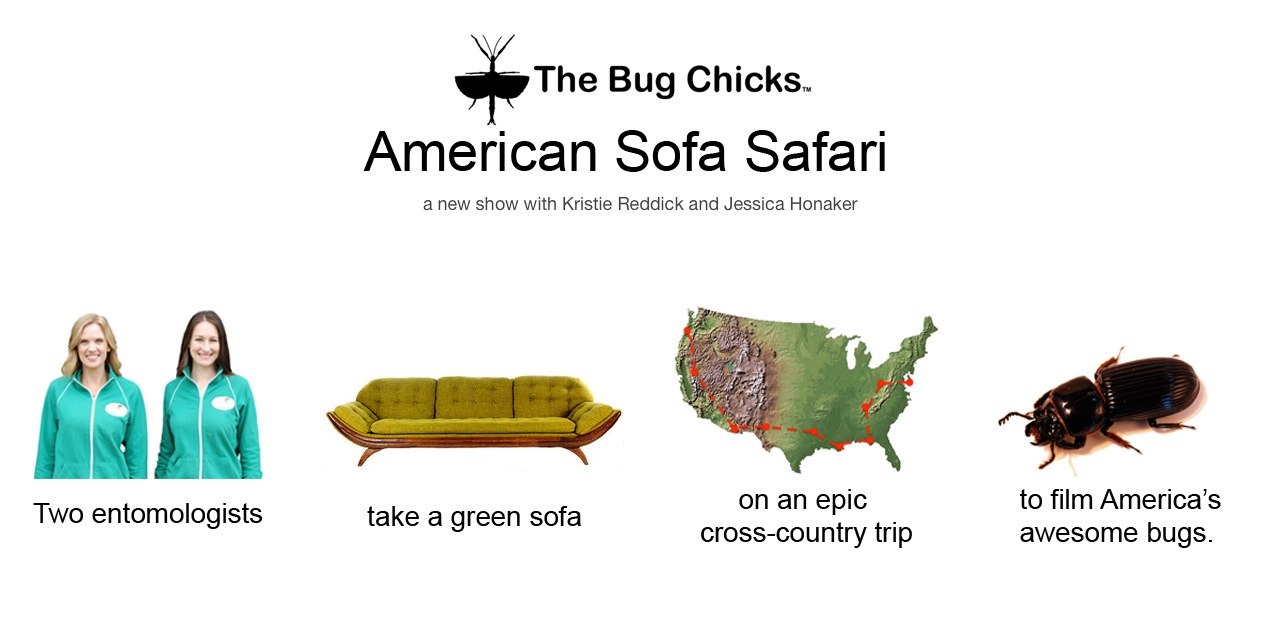










This is something I worry about eternally I don’t feel like we are doing enough there always seem to be so many other things to turn our financial attention to!
I totally agree that integrating outdoor education with kids in school encourages physical fitness, reduces stress and lessens the symptoms of attention-deficit disorders which, in turn, improve the ability of our students to learn. This is one major reason why many schools have started opting for innovative and creative methods to teach students. One such initiative is called World of Work that aims at early exposure for children to career paths. The World of Work focuses on integrating useful, real-world skills into everyday curriculum in a way that makes it beneficial for teachers and students.
It empowers every child with unique strengths, interests and values needed in the world to nurture happy kids, living in healthy relationships on a path to gainful employment. Check it out here
Teachers need to be able to talk with you as easily as they do your child. But if you don’t need help washing blue paint off your hands, how will you get their attention?
Are you saying the teachers need help talking with the parents or the students? Confused a bit by the comment…
Daycare centers include a nice mix of activities during the day to teach different skills, such as singing, dancing, and storytelling.